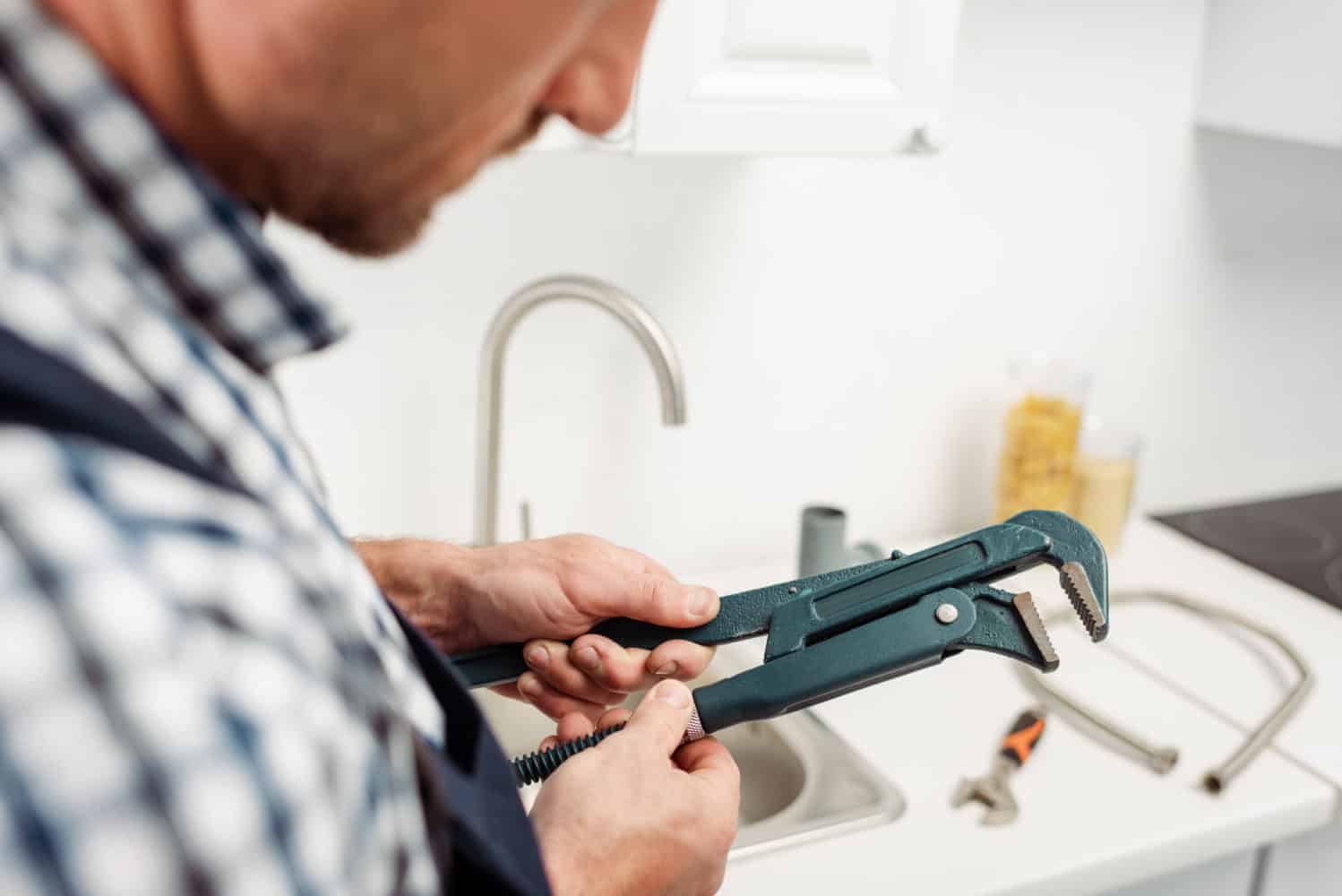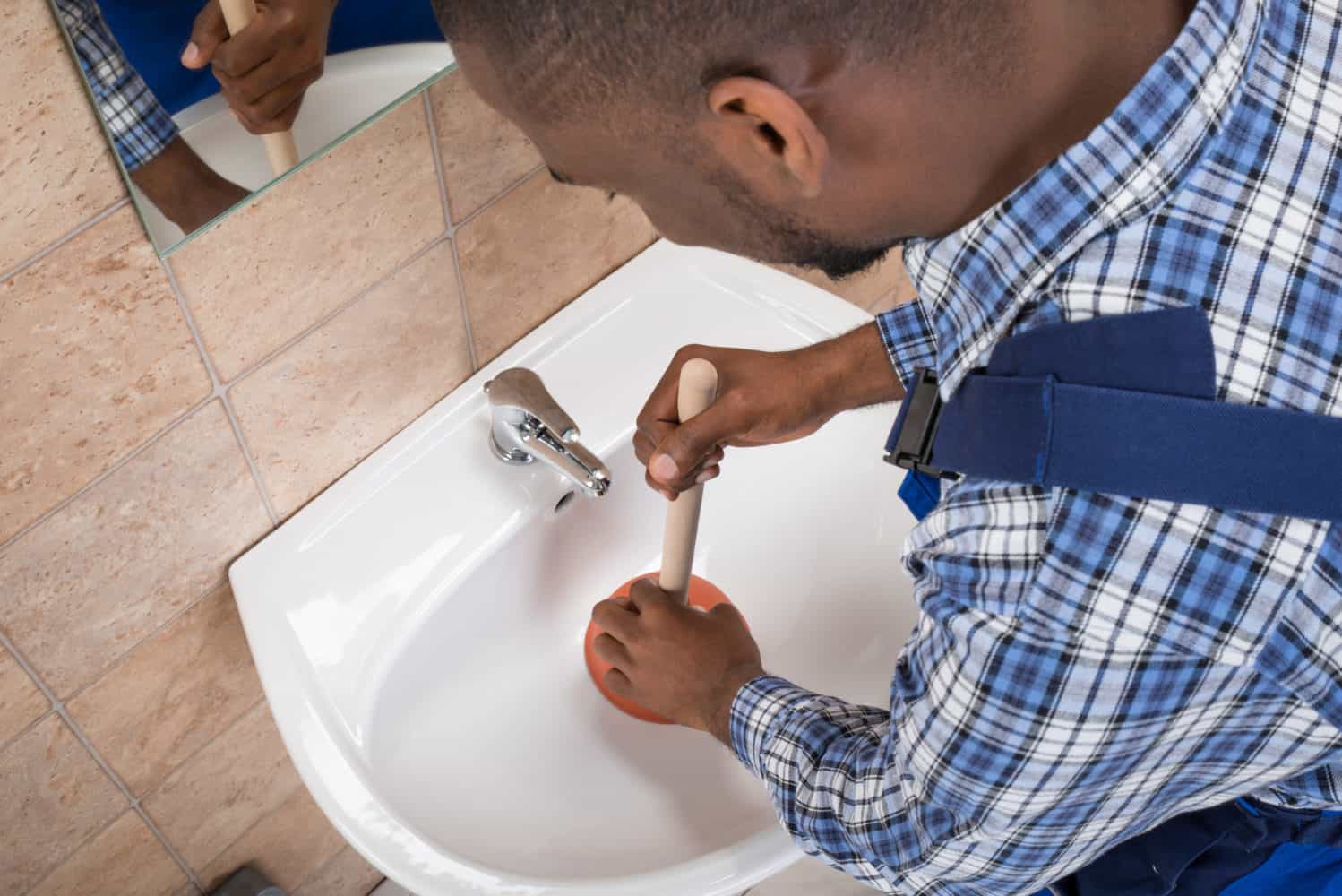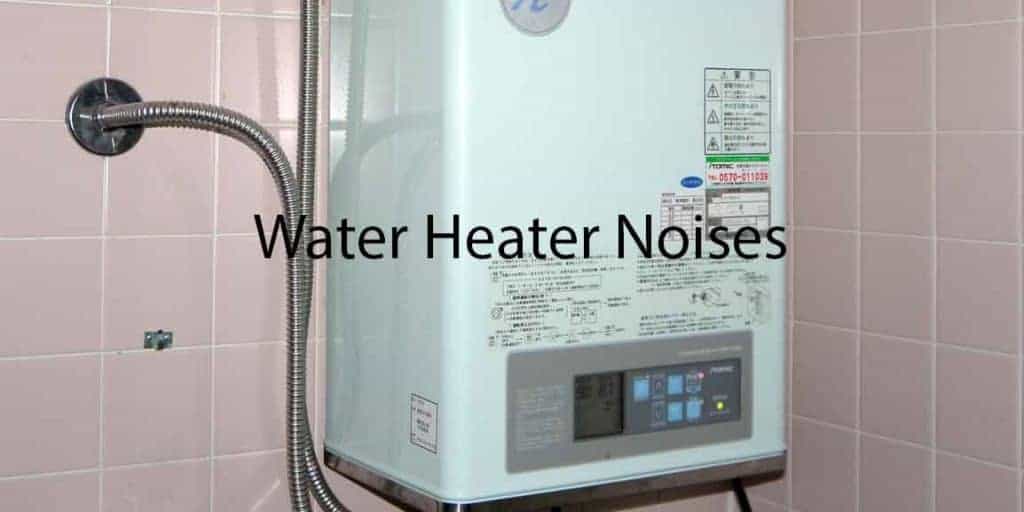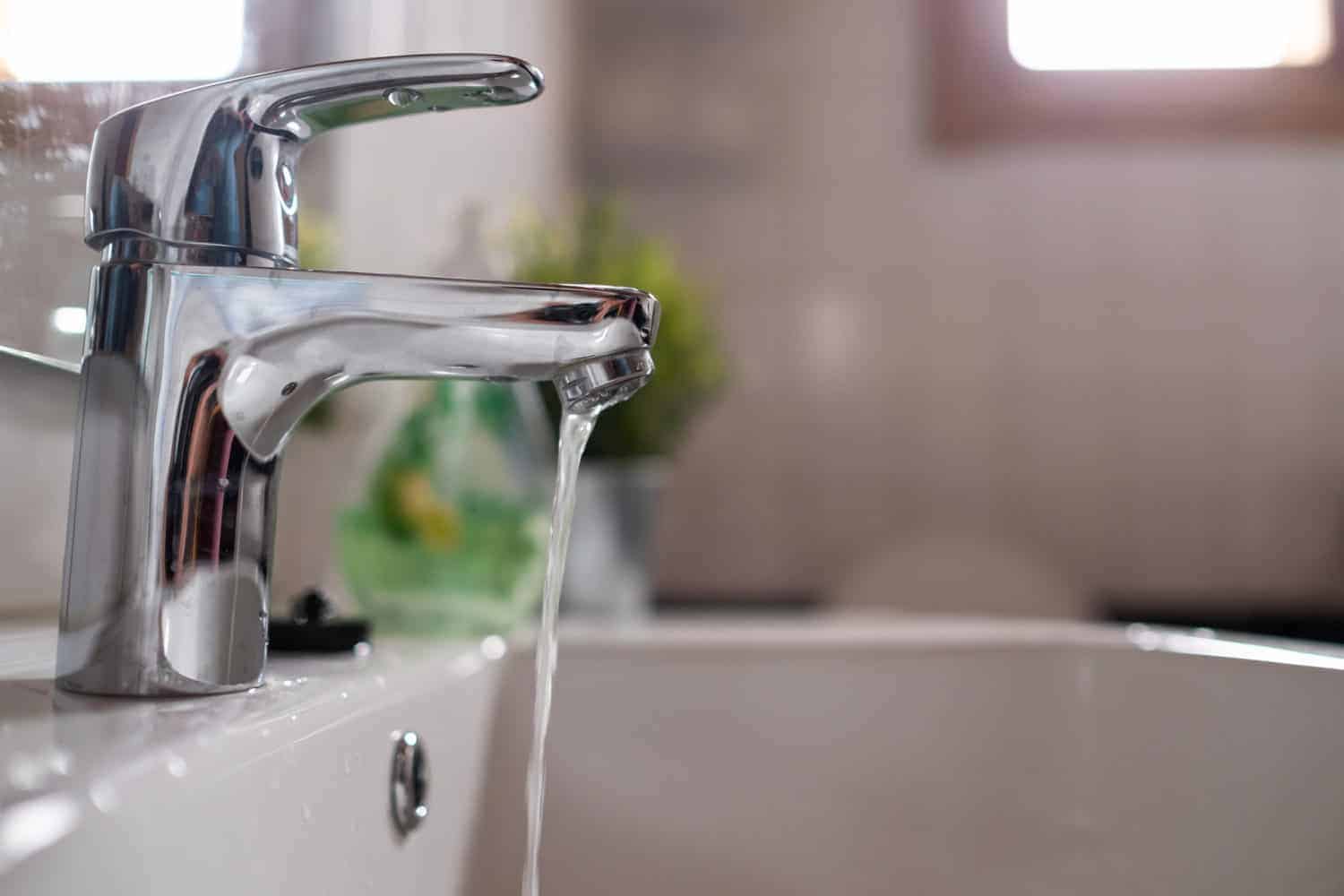Having your kitchen sink lose water pressure can be quite frustrating. With the sink being one of the most used areas in your kitchen, this issue can slow you down.
Generally, this kind of problem is caused by a clogged cartridge or aerator. Other contributing factors include leaking toilets, routine repairs, and water line breaks. Sometimes, a closed PRV (pressure reducing valve) or the shut-off valve can also be the cause.
In this article, we’ll take a closer look at all potential problems related to low pressure in your kitchen sink, and show you how to fix them.
Contents
Is the Issue General or Localized?
Before everything else, determine the size of your issue. The problem of low pressure in the sink is general rather than localized if you have issues with other outlets in the house.
In simple terms, water pressure outlines the force at which the water is moving through your home’s plumbing. As the water demand changes throughout the day, the water pressure changes too.
If you determine you have low water pressure in the entire house, check in with your neighbors. If they’re in the same situation, there’s probably a problem with the municipal supply.
In this case, you will probably have to spend some money and purchase a water booster. This appliance will bring up the pressure in your outlets. If your neighbors don’t have the same problem, the issue lies elsewhere.
What to do if Only Your Home Has This Problem
Have you recently remodeled your home and added new water outlets? If you did, that could be the source of your problem. Low water pressure can be easily caused by increased demand. In this kind of situation, the size of the main water pipe has to be increased.
Many homes have pressure-reducing valves (PVRs). With this regulator, one can control the pressure under which the municipal water is coming into a house. Try to locate yours. it should be where the water line enters your house.
Once you locate this bell-shaped regulator, adjust the setting. Loosen the screw by turning it counterclockwise. By doing this, you’ll be increasing water pressure. To check for changes, run the water again.
Sometimes, these regulator valves can become worn. This can easily affect the water pressure in your home. If your PVR is old and worn, replace it, or call a plumber to replace it for you.
Another possible cause behind reduced water pressure is leaky water pipes. Switch off the primary water valve and check for leaks in the pipework.
Read the water meter, write down what it says, and then check it again after a few hours. Has the reading gone up? If it has, there are probably leaks in your piping system.
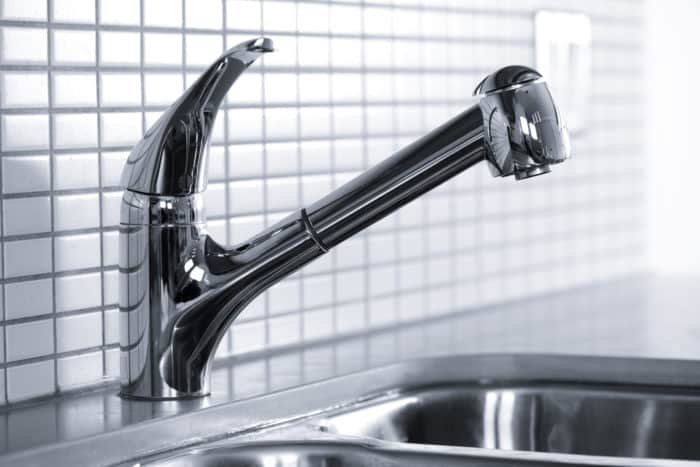
What to do if Only the Kitchen Faucet is Affected
Before we get too technical, make sure to check the water valves. In most cases, these will be located under the kitchen sink. There should be one for cold water and one for hot water. Make sure that both of these are fully open. If they’re not, that’s probably the root of your issue.
While you’re under the sink, inspect the supply hoses too. Ensure that they’re not kinked. Entangled hoses usually cause a partial blockage, leading to a drop in water pressure.
If everything is okay with valves and hoses, the problem could be in the aerator or cartridge.
Checking the Aerator
What’s an aerator? Acting as a restrictor, this part fits into the faucet’s end. By adding air, the aerator reduces the water flow.
Aerators have a lot of small holes. Over time, these holes can become clogged with sediment and mineral deposits. It’s a very common cause behind low water pressure. Here’s how to fix this problem:
- Detach the aerator from your faucet. If you can’t do it by hand, use a pair of pliers. Cover the gripping surface with a cloth or plastic tape. By doing so, the pliers won’t scratch the metal.
- You can’t remove the aerator? If this is the case, try to remove the clogging without removing the aerator. Take a plastic bag, pour some vinegar into it, and tie it around the faucet’s end. Leave it there for a couple of hours – it should dissolve some of the cloggings.
- If you manage to detach the aerator, soak it in a mixture of warm water and vinegar. If it’s still blocked after a few hours, try cleaning it with a commercial lime remover. If that too doesn’t work, replace the old aerator with a new one.
- With the aerator detached, run the faucet to check if the problem was in the aerator. If the low pressure still persists, the issue is somewhere further down the line.
- Once you’ve cleaned the aerator, carefully rinse it out and put it back into its place. Check the pressure. If the problem was in the clogged aerator, the pressure should be normal again.
Checking the Cartridge
The cartridge is a part of every modern faucet. Just like aerators, cartridges have tiny holes that can be blocked. As you can already guess, the blockage will cause low water pressure. Here’s how to check the cartridge:
- First of all, turn off your water supply. To let the water flow out, run the faucet. Put the plug into the kitchen sink as a preventive measure. By doing this, you won’t be able to drop anything into the drain.
- Now, you’ll need to locate the screw that fastens down the faucet. It should be under the faucet. Use a screwdriver to remove the cap and an Allen wrench to remove the screw.
- Once this is done, lift the faucet’s handle and carefully remove the cartridge nut. Remove all of the pieces out of the faucet. To make putting them back easier, spread them out on a towel in the correct order.
- Take out the cartridge and clean it thoroughly. If there are any mineral deposits on it, soak the cartridge in vinegar. Cartridges that look too worn out should be replaced.
- Take the cleaned cartridge and put it back into the faucet. Put every piece back into its place. Once you’ve replaced all the parts, check the water pressure.
Checking the Pullout Spray
Another part of the faucet that can cause low water pressure is the pullout spray. Detach the spray head from the hose and run the water.
If the pressure is right, the issue was probably in the clogged spray head. Mix some warm water with vinegar and thoroughly clean the head’s mesh with the mixture.
What to do if There’s a Blockage in the Pipes
If everything is right with the aerator and the cartridge, the issue could be in blocked pipes. The pipework that leads to the faucet can get clogged over time. This is particularly true for homes in hard water regions.
The mineral buildup in the piping system can slow down the water supply. Galvanized pipes are especially notorious in this regard. In such pipes, sediment and debris build-ups are almost unavoidable.
For a proper inspection of the pipework, opening a pipe access point is required. Carefully unscrew the riser and place a bucket under the pipe. Make sure to back up the pipe to avoid damage. Now you’ll be able to check the pressure of the water spilling into the bucket.
Read also: Why is Brown Water Coming from Water Pipes?
What to do if Only Hot Water Pressure is Low
If you’re having issues only with hot water pressure, make sure to check your water heater. If you are not sure what kind of water heater you have, check out our electric vs gas water heater comparison.
The shutoff valve for hot water may be partially closed, or even faulty. Even a slightly shut hot water valve can have a tremendous impact on the water pressure.
Once you take care of this valve, inspect the water pressure again. If it’s still inadequate, there could be a problem with the heater. The issue could also lay in the pipework leading to the heater.
Avoid messing with the heater yourself – it’s dangerous. Instead, call a plumber to take a look. These technicians have special diagnostic tools with which they can locate potential leaks and blockages.
What to do if The Toilet is Leaking
Another possible cause for low water pressure is a leaking toilet.
The toilet leaks are typically caused by breaks in the toilet tank or in the supply lines. A stuck or warped float, fill valve, or flapper could also be causing the leak. The faulty connections are another possible cause.
Most of these issues aren’t that hard to take care of. You can always call a plumber to fix them for you, though.
Read also: My Toilet Tank is not Filling Properly
Conclusion
As you can see, low water pressure in the kitchen sink can be caused by many different things. In most cases, locating the issue is harder than actually fixing it.
And when it comes to fixing it, doing it by yourself is the cheaper way. It’s not always possible, though. Some of the problems mentioned above will require professional help.
In any case, your low water pressure problem should be addressed immediately. If you don’t do something about it, it can lead to new issues further down the line.
